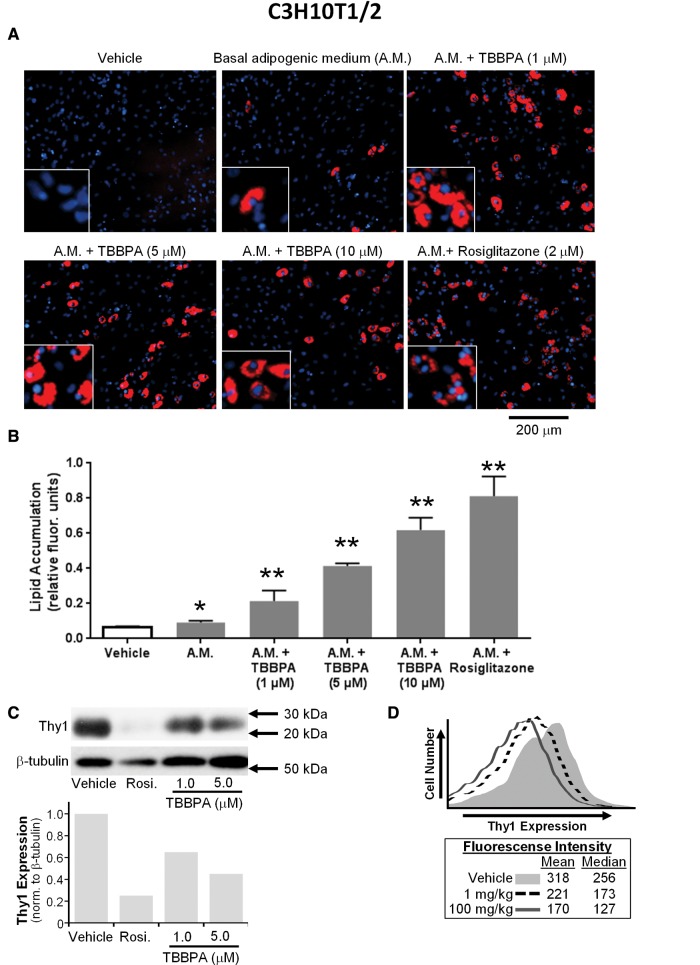FIG. 2.
TBBPA promotes adipogenesis and reduces Thy1 expression. (A) C3H10T1/2 cells were plated and allowed to reach confluence before being treated with vehicle or adipogenic medium that contained 0.5 mM IBMX, 0.5 μM dexamethasone, and 2 μg/ml insulin in 3% FBS supplemented DMEM for 2 days. After 2 days, fresh adipogenic medium lacking IBMX was added every 3 days. In addition to adipogenic medium, some cells received 1, 5, or 10 µM TBBPA or 2 µM rosiglitazone for the entire 8-day experiment. Representative LipidToxRed staining is shown. (B) Lipid accumulation in C3H10T1/2 cells was quantified using the fluorescent AdipoRed assay. The results shown are a result of three different experiments with three replicate wells measured for each experiment. The data were analyzed by a one-way ANOVA with Tukey’s post-test for significance (*P < .05 and **P < .01). (C) Western blot analysis of Thy1 expression in C3H10 T1/2 cells treated with rosiglitazone or TBBPA (1 or 5 μM) for 4 days without adipogenic medium. β-tubulin serves as a loading control. Densitometry analysis of the representative Western blot is shown below the blot. (D) Male C57Bl/6 mice were injected intraperitoneally (three times per week) with Vehicle (corn oil) or TBBPA (either 1 or 100 mg/kg) for 5 weeks, then visceral adipose tissue was harvested and dissociated with collagenase as described in Material and Methods section to liberate stromal cells. Cells were stained with an anti-Thy1 antibody and stromal cells were gated on and analyzed for Thy1 expression. Thy1 expression was decreased by TBBPA. (n = 3 animals/group, representative animals shown).

